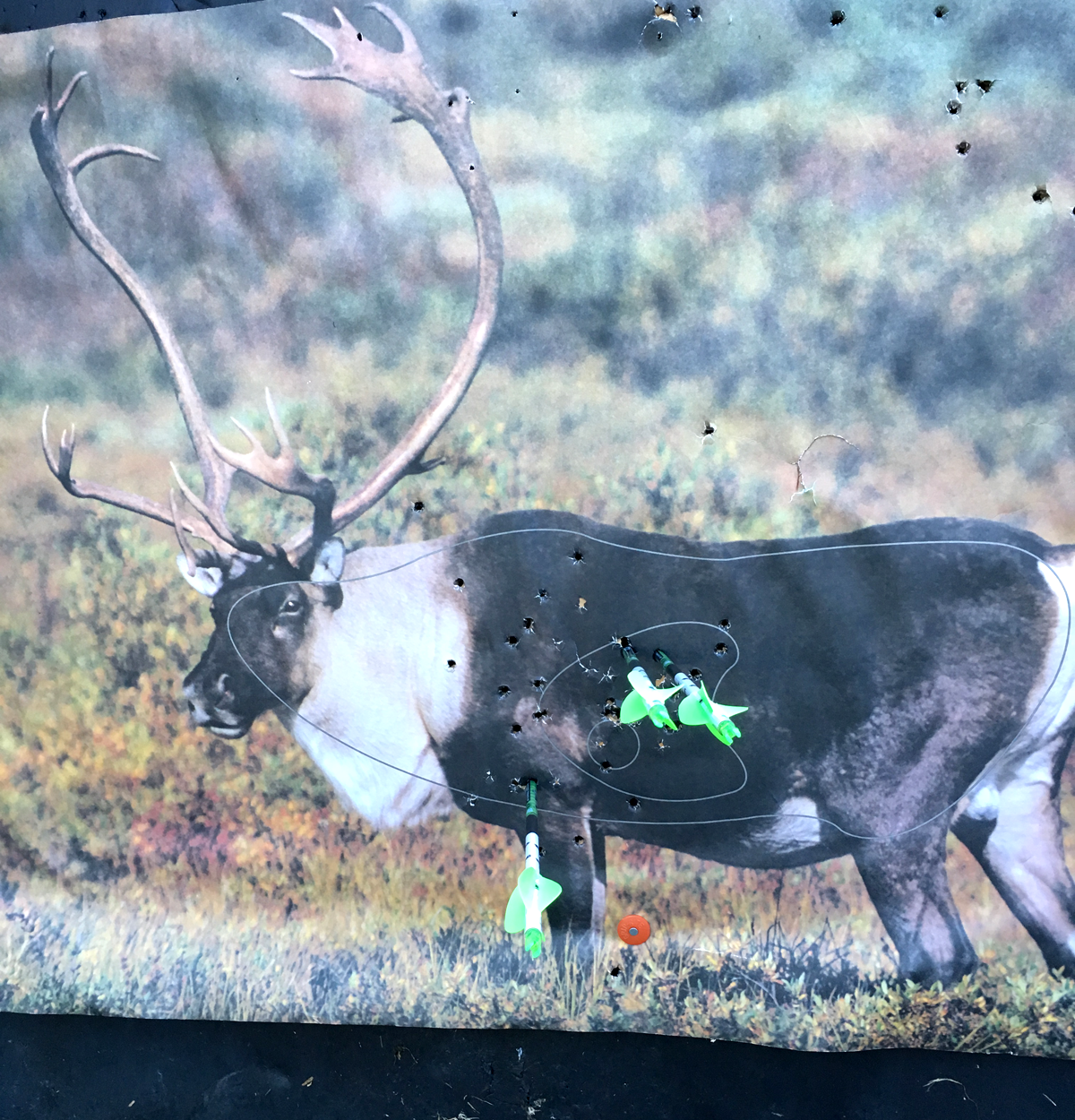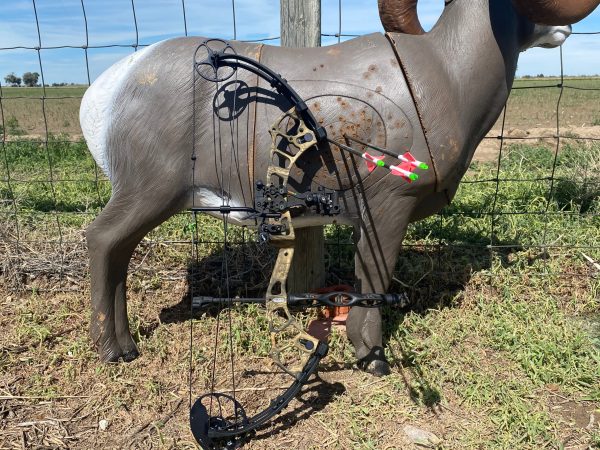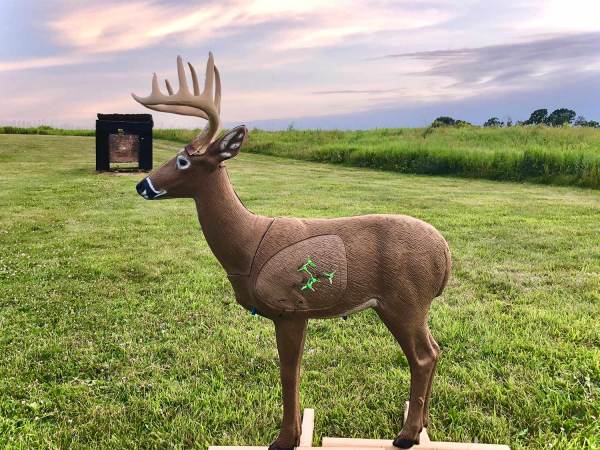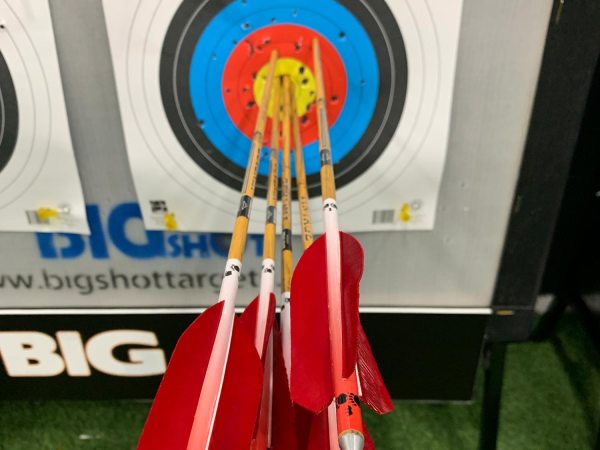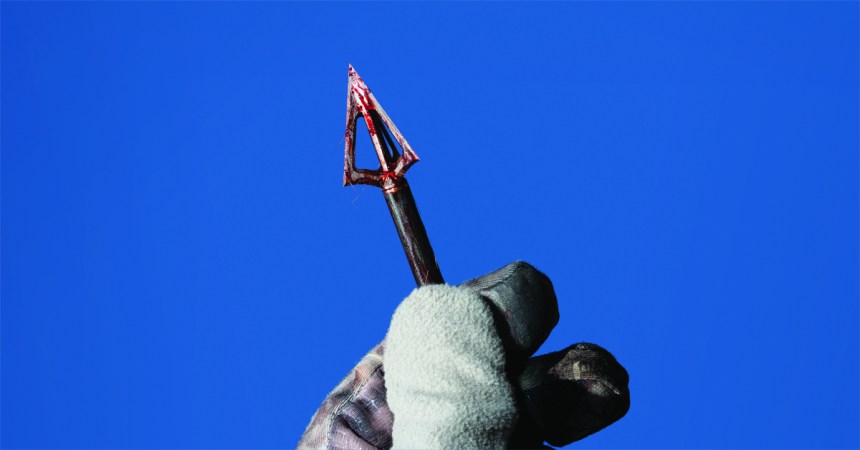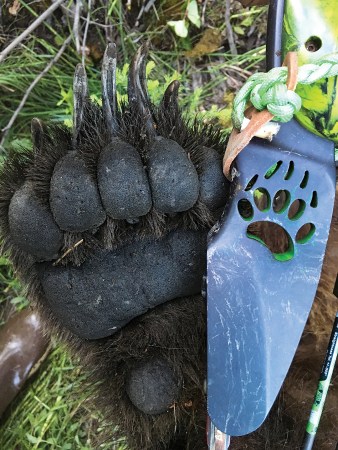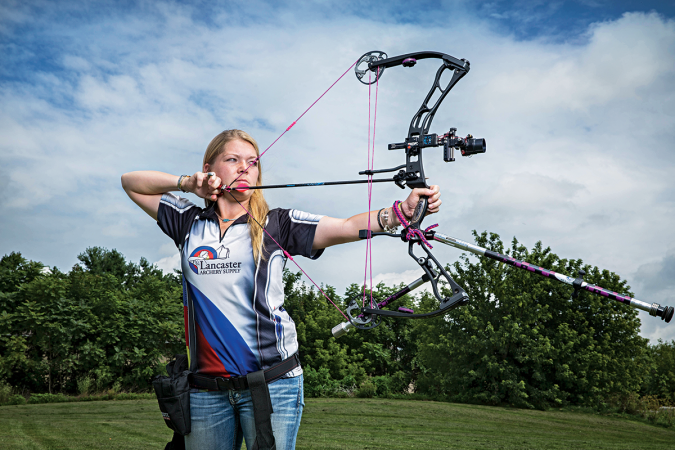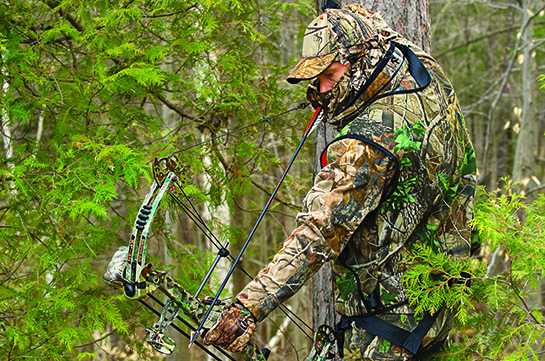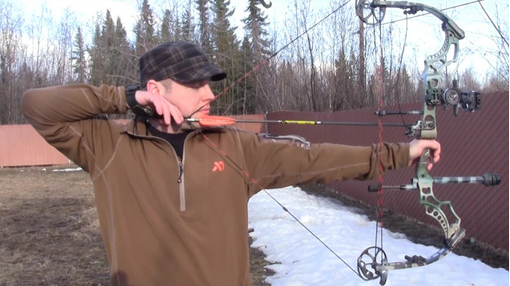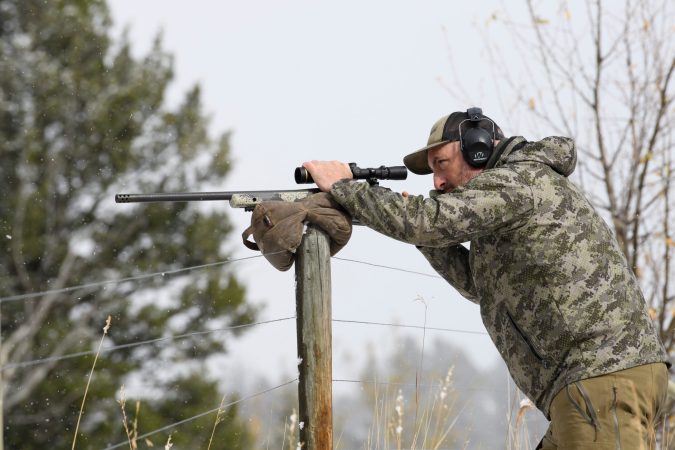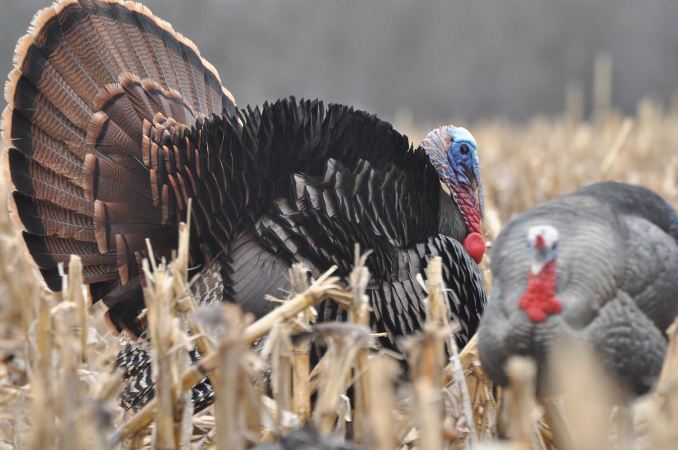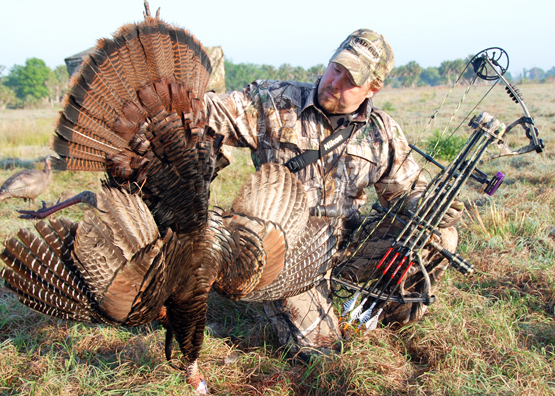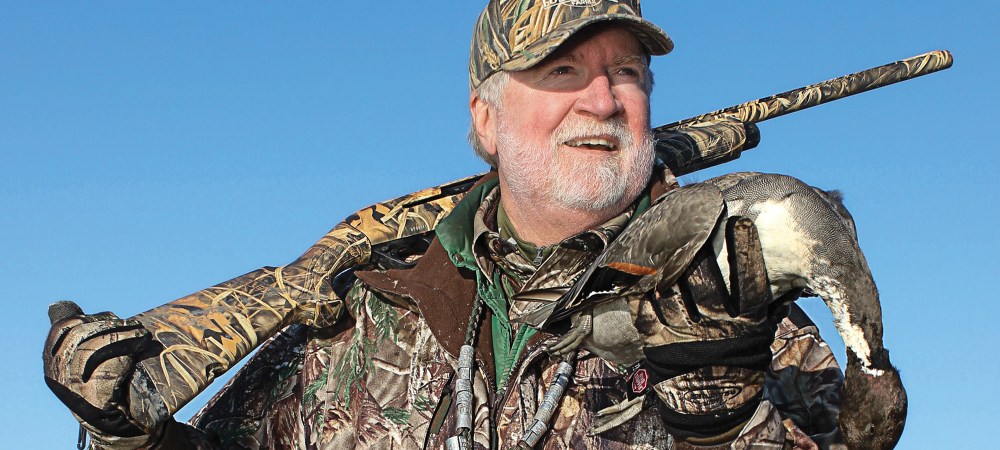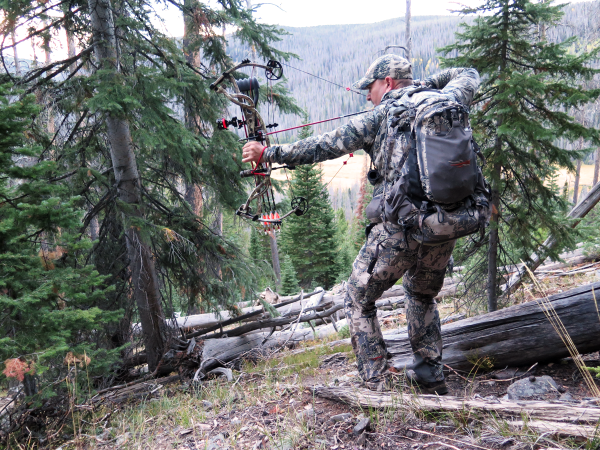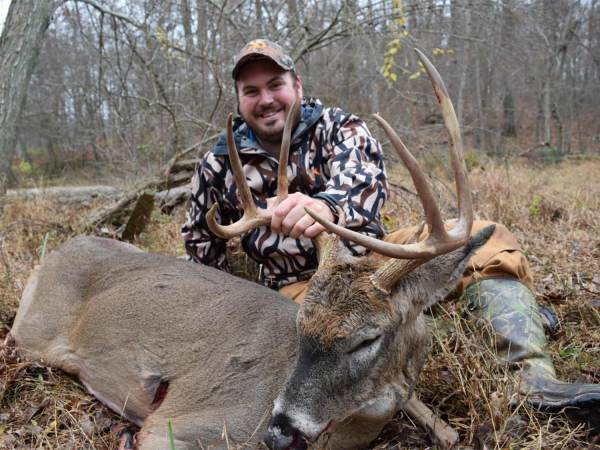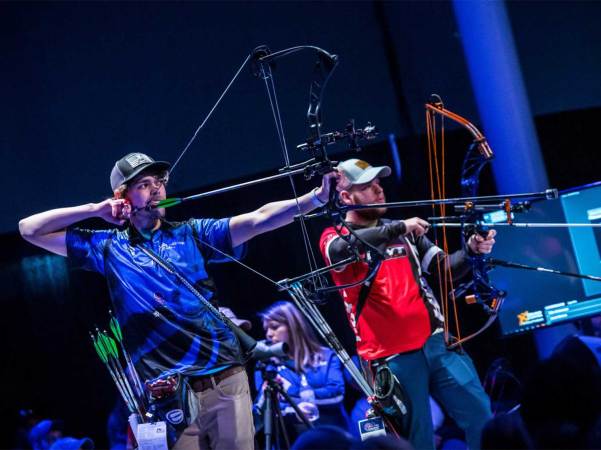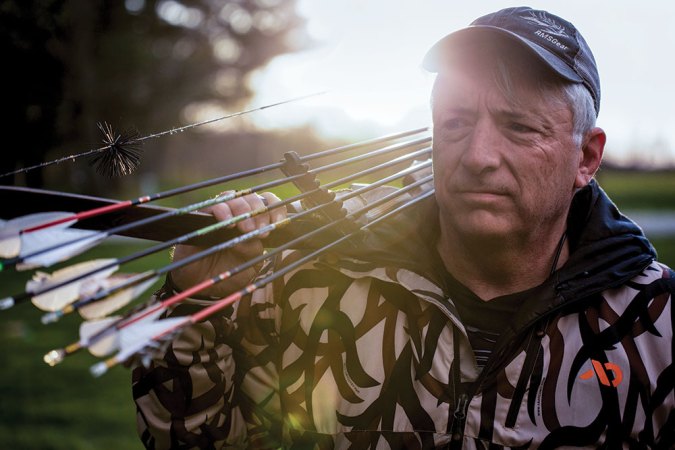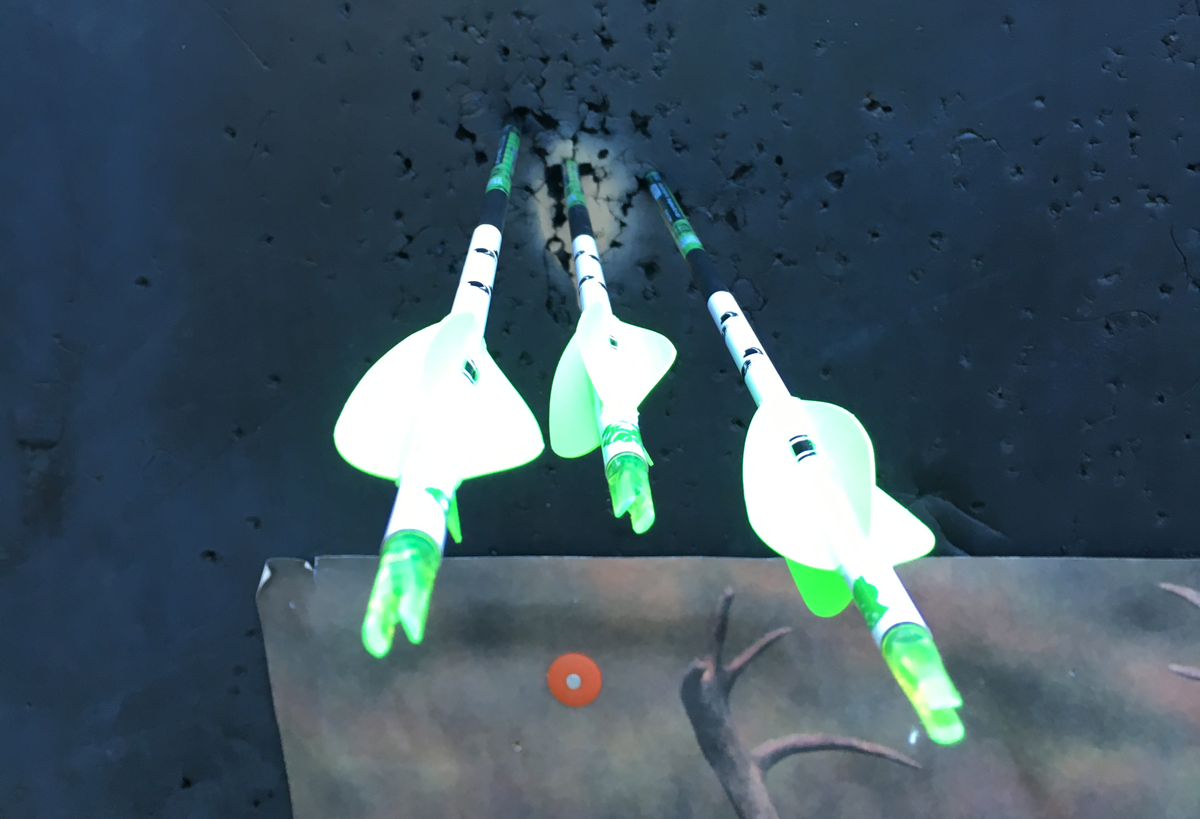
If there’s one bowhunting proverb stated more frequently than any other, it’s the admonition to “pick a spot” when you shoot. We know that when we pick a particular spot on a target or animal to aim at, we almost always are more accurate. This is true for both compound/sight shooters and traditional archers. Just like anything, though, if you don’t practice it, you’re much more likely to have trouble in real-world hunting situations.
It’s easy to tell yourself to pick a spot, but trouble shows up when you start to add distractions to your visual cue. I find that the more things I try to think about: proper form, consistent release, and target cognition, the more my shot falls apart. That’s why it’s so important to build muscle memory through repetition of perfectly executed shots, and why I think that blank or blind bale shooting is one of the archer’s most valuable practice tools. You need that perfect execution to just happen, without having to think about it.
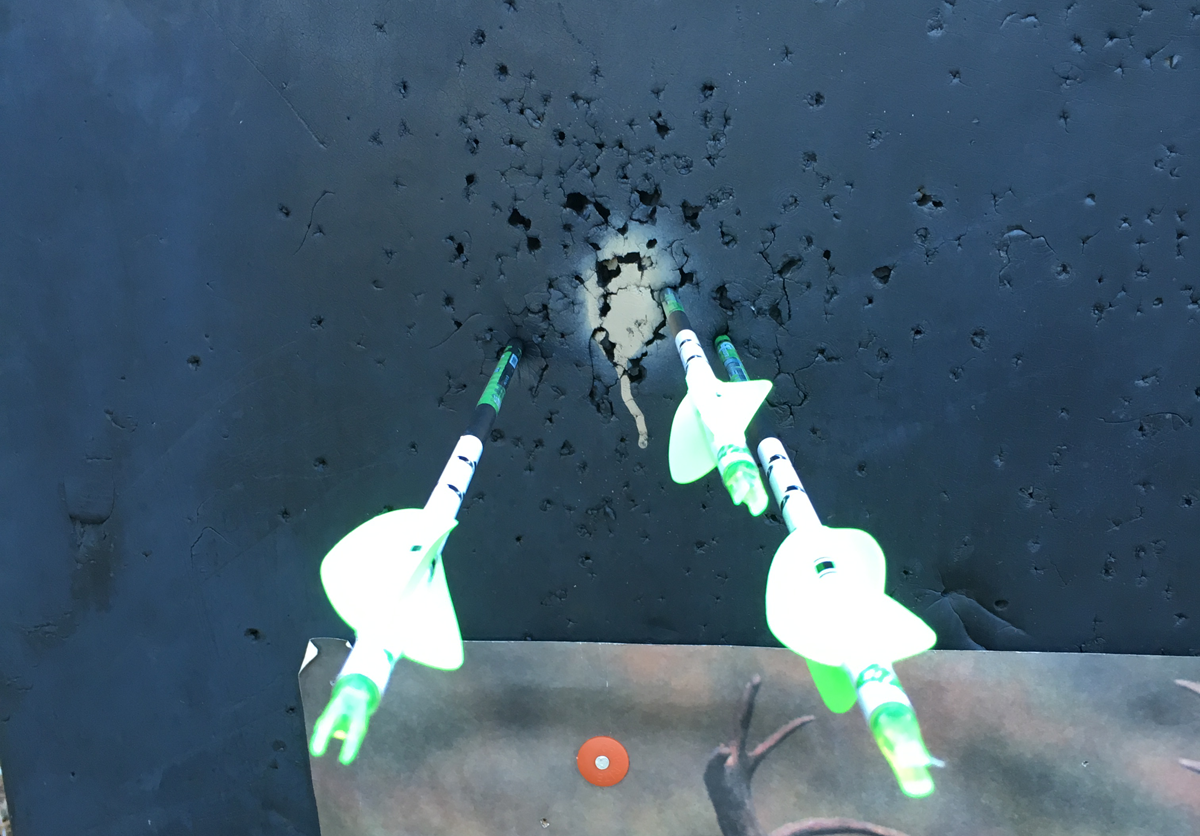
wo groups on a spot target (above), caribou photo target (below). __
This is why the most typical target that most of us shoot is a bright spot on a dark background. The bright spot focuses our vision, allowing us to focus on all the other mechanics that go into a shot without having to over-think the visual part.
But what happens when we switch targets in the course of a shooting session? Your focus degrades, and you typically start to spray arrows all over the place.
I’ve found that when I’ve been shooting on a spot target and can repeatedly stack arrows on it, then immediately switch to a 3D or animal photo target, my groups degrade dramatically. I’ve also had similar issues on 3D targets. Our club has a dinosaur target that I struggle with more than any other. The 10 and 8 rings are basically the same size as most deer and bear targets, but I consistently shoot worse on it. Why? Because the dino somehow distracts me.
What’s going on here? Your mechanics haven’t changed, but the visual change has affected your focus. And this is precisely why you should practice on a variety of different targets, to train your eyes to find the spot, no matter where it is.
Visual variables effect everyone differently, and some folks just plain focus better than others. I’d say I’m more like the dog that gets distracted by every squirrel. A shot will look good, feel good, then I’ll see or think something that takes my focus off the spot, and I end up making a sloppy shot.
For me, the biggest keys in maintaining my focus on one spot of various sizes, colors, and shapes of targets is to practice like that. Shooting a spot target is great, and that practice counts too, but for real-world application, it helps to not let yourself get too comfortable with the same sight picture.
I like to vary my practice routines between spot targets, 3D targets, and burlap or paper animal targets. I find weekly 3D shooting to be a big help for me. Even if it’s not realistic for you to regularly shoot 3D targets, don’t fret, you can still achieve the same effect. For example, instead of shooting a target that’s white-on-black or black-on-white, add in targets that are brown-on-black, or dark brown on lighter brown, and targets that vary in size or shape. Also, try making or using a target with a lot going on, that is, a target with multiple spots that are close together, targets that have writing on them, or targets with any other distracting visual variable. As you repeatedly practice picking and focusing on that one tiny spot amongst all the clutter, you will get better and better at shutting out all of the other variables that can draw your focus away from where you want the arrow to hit.
This is just one way to improve your real-world bowhunting accuracy, but it’s a major one. If you regularly keep your shot in check on the blank bale, sharpening your focus will greatly improve your confidence and shooting in a wide range of hunting situations.

